This Is Why December 31 Is The Cosmic Calendar’s Most Important Date
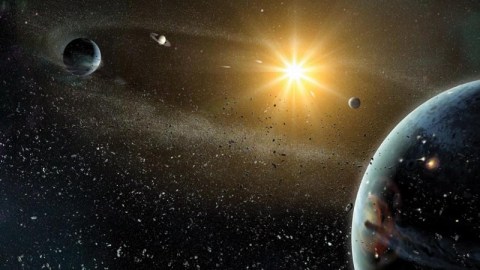
If you were to compress the entire history of the Universe into one calendar year, everything we love happens on December 31st.
Our Universe has been around for 13.8 billion years since the Big Bang. This timespan is so incredibly long and so far outside our normal human experience that most of us can’t even wrap our heads around it. Speaking about events that happened thousands, millions, or billions of years ago might all seem unfathomably ancient, but they’re as different from one another as they are from what happened this past year.
However, we can leverage a fun thought-experiment to help us wrap our heads around the history of the Universe: imagine that all of it — all 13.8 billion years — were compressed to fit into a single calendar year. Each “day” on that calendar would last around 38 million years, and a single human lifetime would last just about 0.2 seconds, on average. If this were how things truly unfolded, December 31st would be the most important date of all. Here’s why.
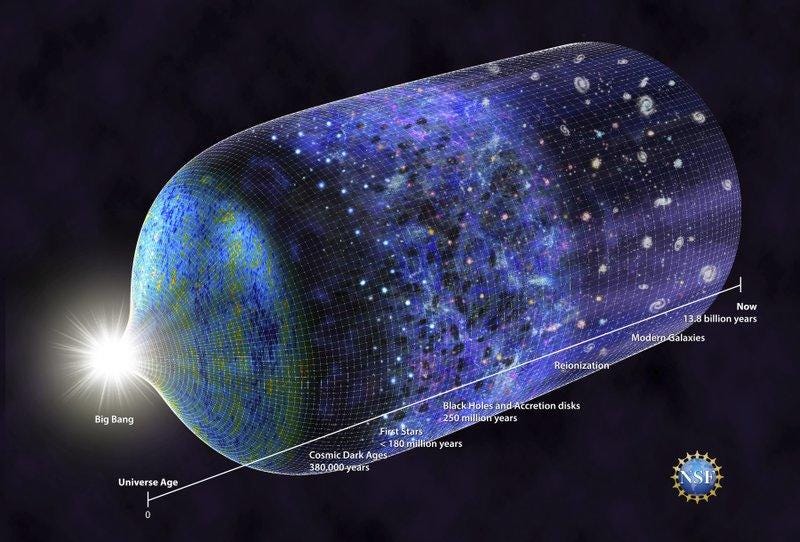
The history of our Universe would begin with the start of the hot Big Bang on January 1st, followed by the Universe expanding, cooling, and gravitating ever since. The first stars would form on January 3rd, with the first galaxies forming a few cosmic days after. By the end of January, the first galaxy clusters are starting to form, followed by star formation reaching its peak in mid-March.
At the end of June, the matter density drops enough that dark energy’s effects begin to show and the Universe begins accelerating, sealing our cosmic fate. In early September, the Sun and Earth form, with the Moon forming from a giant impact about 1 cosmic day later. And yet, Earth’s rich biological history only gets familiar towards the very end.

The first sexually reproducing organism, a single-celled eukaryote, doesn’t evolve until December 2. The Cambrian explosion occurs on December 17. A giant impact occurs, rendering the non-avian dinosaurs extinct, on the morning of December 30th. But December 31st, which wouldn’t even see the first Homo sapiens appear until 11:53 PM, is truly the most important day as far as our story is concerned.
As the clock passes midnight on December 30th, the world has largely moved on from yesterday’s mass extinction event. Primates, rodents, lagomorphs, and many other forms of mammals — placental mammals, marsupials, and even egg-laying mammals — have taken that opportunity to diversify and fill every niche available. Wet-nosed and dry-nosed primates have already split, and the dry-nosed primates, right at (or perhaps just before) the start of December 31, split into New World and Old World monkeys.

The Old World monkeys continue to occupy a variety of niches, living mostly in the trees and diversifying in terms of both size and physical appearance. At about 8 AM on December 31, the first apes arise, splitting off from the remaining Old World monkeys at this time. The apes — defined by the complete lack of a tail of any type — would go on to give rise to many of the close relatives of humans that survive today: both the lesser apes and the great apes.
Right around noon, the earliest ape to split off from the Old World monkeys — the Gibbon — arises. About 2 hours later, the first great apes arose, with the Orang-utan branching off at around 3 PM and spreading into southern Asia. The other great apes remained in Africa, with the largest primate of all-time, Gigantopithecus, arising at about 6 PM.
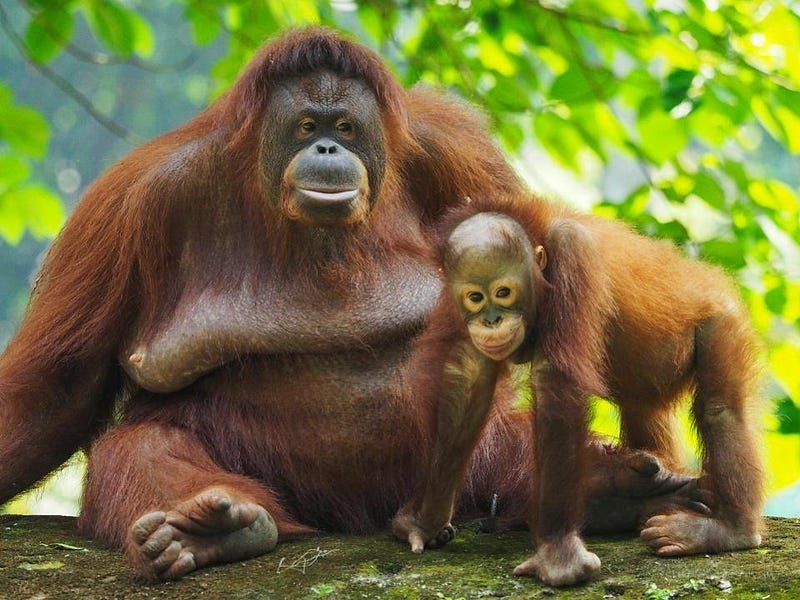
At around 7:30 PM, the gorilla branched off from the other great apes, while a tremendously important evolutionary split occurred at about 8 PM: the split between the chimpanzee/bonobo branch and the branch of the great apes that would give rise to humans. The chimpanzee/bonobo branch remained unified until about 10:30 PM, with the extant chimpanzees and bonobos surviving as humanity’s closest living relatives.
That’s because all of the other, more direct ancestors of human beings, despite taking a rich evolutionary path before they arrived at us, no longer survive. In our evolutionary ascent, every member of the same family, genus, and species of human beings has been a casualty of both nature and our own activity. While chimpanzees and bonobos remain, we have no living relative that we share an evolutionary history with prior to 8 PM on December 31.
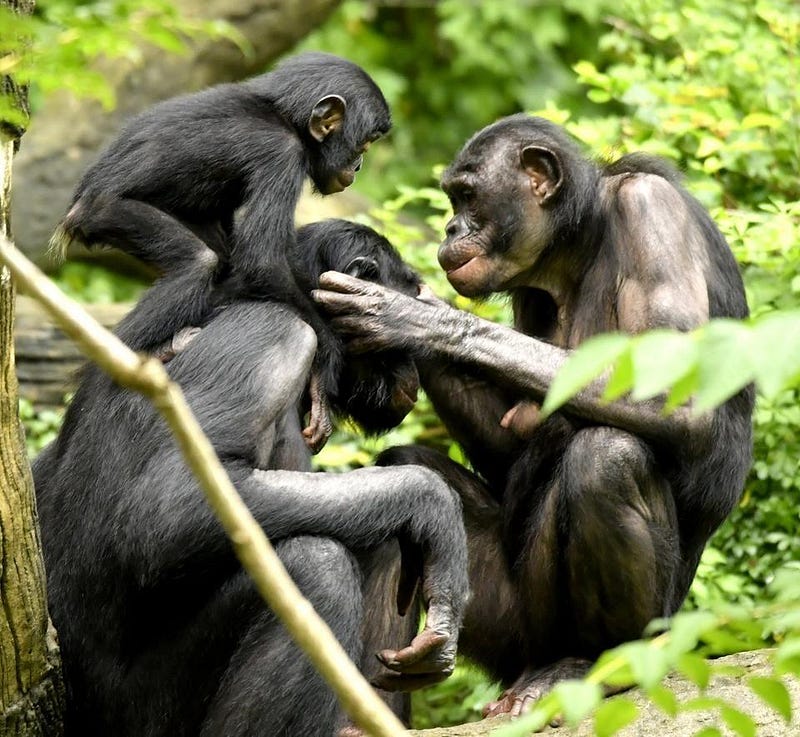
Just those last 4 hours before midnight on the cosmic calendar are filled with enormous and profound developments. At about 8:30 PM, the first truly bipedal ape, Ardipithecus, arose. An hour later, at 9:30 PM, the first Australipithecus evolved, marking the first appearance of the Hominina subtribe. At around 9:45 PM, we see the first evidence for stone tool use in human ancestors, a development that (in real-time) dates back to around 3.6 million years ago.
And then, at around 10:15–10:30 PM, and enormously critical step in our development occurred. Our hominid ancestors, facing food shortages, underwent two evolutionary paths: one branch developed stronger jaws, enabling them to crack previously uncrackable nuts, while the other developed larger brains and weaker jaws, providing a different path for food access. That latter path eventually led to the genus Homo, exemplified by the large-brained Homo habilis, while the strong-jawed branch quickly died out.
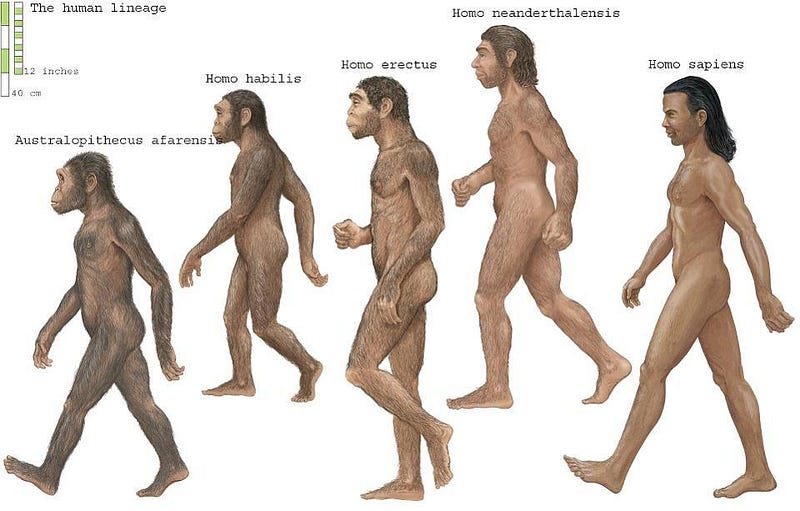
By about 10:45 PM, Homo erectus had evolved, the largest-brained human ancestor so far and the first to both leave the African continent and display evidence of fire use. By 11:20 PM, Homo habilis and all of the Australopithecus species had become extinct.
But development still continued unabated, both evolutionarily and from a cultural/scientific perspective. At around 11:33 PM, the earliest evidence for cooking appears. At 11:36 PM, Homo heidelbergensis has evolved, thought by many to be an in-between link between modern humans and the older Homo erectus. And at 11:40 PM, the first evidence for clothing appears in the fossil record. It wasn’t until approximately 11:48 PM on the cosmic calendar, or about 300,000 years ago in actual time, that anatomically modern humans, Homo sapiens, arose for the first time.
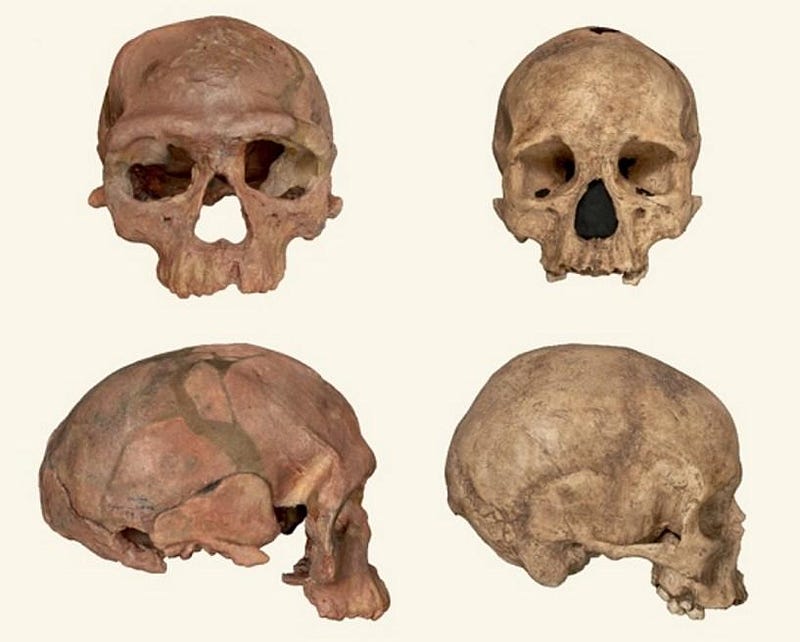
What we consider the crowning achievements of civilization all only happened in the final minutes of the cosmic calendar.
- At 11:56 PM, the most recent glacial period arrived, forcing all surviving hominid populations towards equatorial latitudes.
- At 11:58:20 PM, 100 seconds before midnight on the cosmic calendar, modern humans left Africa for Europe for the first time.
- Between 11:58:30 and 11:58:54 PM, just before the final minute, we find the earliest musical instruments (a bone flute), domesticated dogs, cave paintings, and sculptures.
Interspersed in that penultimate minute, at 11:58:43 PM, the last Neanderthal died out, leaving Chimpanzees and Bonobos as humanity’s closest living relative. Only in this last minute of cosmic history, corresponding to the most recent 26,000 years, did what we now consider “modern human civilization” emerge.
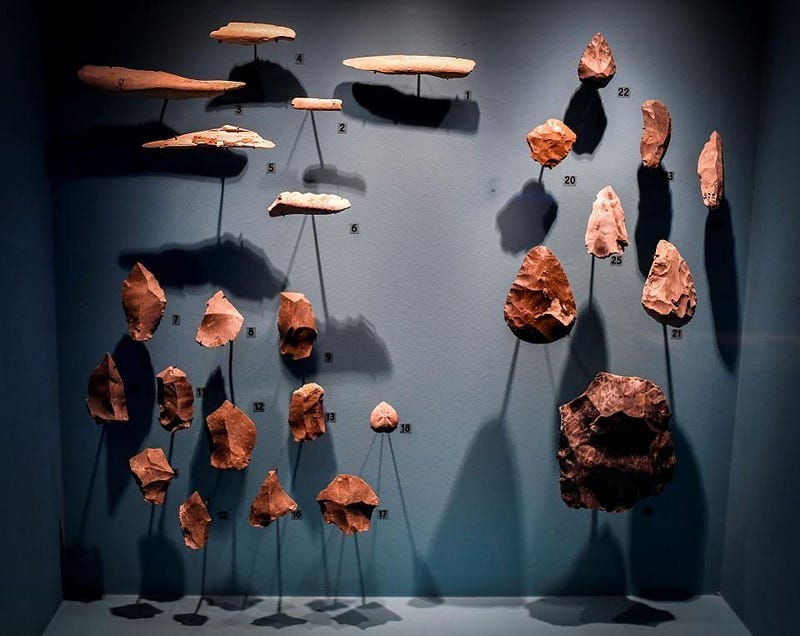
This last minute of cosmic time sees the last glacial period ending, transforming the Earth to its modern global appearance. Humans spread to the Americas and Australia, while more large animals (like sheep, pigs, and goats) become domesticated as others (like the woolly mammoth) go extinct.
- 26 seconds before midnight, the last of the continental ice retreats, officially ending the last ice age.
- 22 seconds before midnight, farming and agriculture become widespread.
- 20 seconds before midnight, the first walled cities arise, with populations exceeding 1,000 humans.
- 18 seconds before midnight, pottery and winemaking show up.
- 14 seconds before midnight, the plough is invented, revolutionizing agriculture.
- 12 seconds before midnight, the wheel, numbers, and writing are invented.
- 9 seconds to midnight, metal working and the bronze age arrive.
On the cosmic calendar, each second corresponds to 440 years. Even landing on the Moon occurred barely 0.1 seconds ago, from a cosmic perspective.

All that human beings have ever accomplished occurs in a cosmic blink-of-an-eye. Our progress over the past few thousand years may have been rapid and incredible, and has brought us to a point where we now seek to extend our civilization beyond Earth. We have come so far in such a short time, cosmically speaking, but whether we’ll endure remains to be seen.
If we truly want to make any significant dent into “year 2” of the cosmic calendar, we have our work cut out for us. The world is changing rapidly and, on many fronts, we continue to damage and poison the ecosystem that sustains us. If we don’t begin taking a longer-term view of our civilization, we could be gone in mere cosmic seconds, just as all of recorded human history fits into mere seconds as well. As the 2010s give way to the 2020s, it’s up to all of us to pilot our one-and-only habitable planet, Earth, in the right direction.
Ethan Siegel is the author of Beyond the Galaxy and Treknology. You can pre-order his third book, currently in development: the Encyclopaedia Cosmologica.





